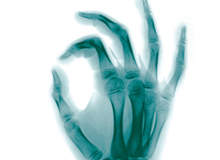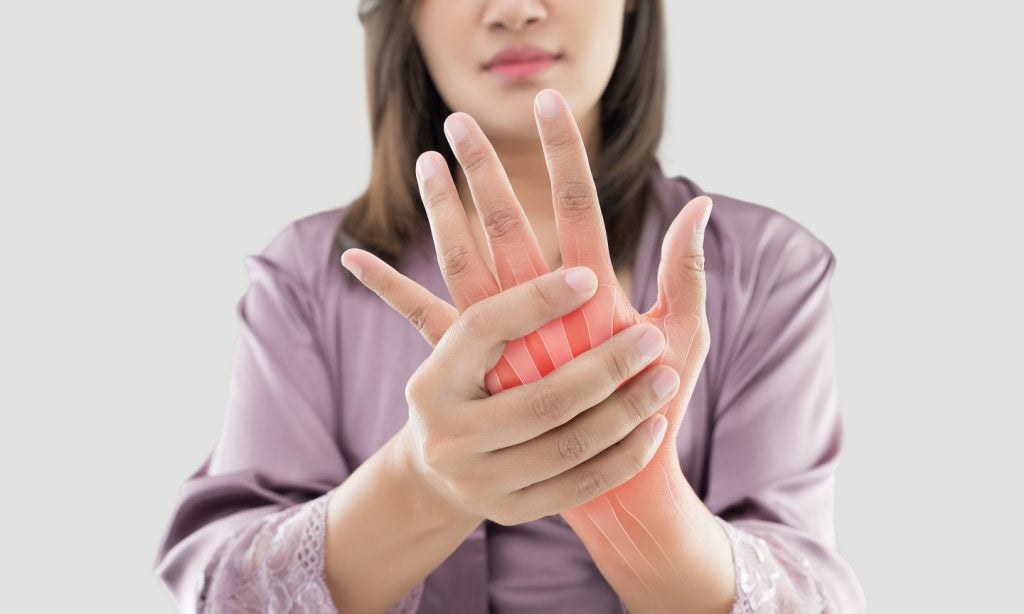
In orthopaedics there is an unmet need for graft material to provide support, fill voids and enhance biologic repair of bone defects. It is a large and rapidly growing segment of the orthopaedic market: today, bone replacement is required in about half of the musculoskeletal procedures performed. Historically, autograft has been the standard of care because the procedure is well established and it has excellent long-term results.
Harvesting an autograft, however, requires additional surgery at the donor site, which is related to a high level of morbidity. Furthermore, the quantity of bone tissue that can be harvested is limited. Allograft is a reasonable alternative, but is relatively expensive due to the costs of bone banking. It also bears some risk of disease transmission and immune rejection. Stricter regulations to increase safety will further raise the costs of allografting in the near future.
Bioceramics
These issues have prompted a quest for alternative materials. The main function of such a material is to allow new bone to grow into the defect. The material therefore functions as a scaffold on which cells can migrate, attach, differentiate and make new bone. Bioceramics, based on calcium phosphates and/or hydroxyapatite (HA), are osteoconductive as they have a close resemblance to the mineral component of bone and directly bind to it, and cells such as osteoblasts and their precursors easily attach to their surface and form bone.
Remodelling is also supported because osteoclasts are able to degrade this type of scaffold and induce osteoblastic activity. A drawback of bioceramics is that close proximity to the host bone is necessary to achieve osteoconduction.
See Also:
They are rather brittle and their strength is limited unless a considerable amount of HA is added, although doing so makes the material stiffer and more difficult to degrade, which may slow down or even inhibit bone growth. Brittleness also makes ceramics difficult to process. Finally, a more practical disadvantage of bioceramics is that they eclipse the healing area on radiographs: it is hard to see whether new bone has been formed and if the defect has healed or not.
How well do you really know your competitors?
Access the most comprehensive Company Profiles on the market, powered by GlobalData. Save hours of research. Gain competitive edge.

Thank you!
Your download email will arrive shortly
Not ready to buy yet? Download a free sample
We are confident about the unique quality of our Company Profiles. However, we want you to make the most beneficial decision for your business, so we offer a free sample that you can download by submitting the below form
By GlobalDataDegradable polymers
Some of the drawbacks of bioceramics are countered by degradable polymers. They have great design flexibility because their structure, composition and properties can be tailored to specific needs. Biodegradability can be imparted into the material by molecular design: some polymers undergo hydrolysis, others can be degraded by enzymatic pathways.
Polymers are much more ductile, too, and some can – in their solid form – reach mechanical compression strength close to cortical bone, although tensile and bending strength are generally much less than bone. Another advantage is that they are radiolucent, so the bone-healing process can be followed radiographically.
One negative, however, is that degradable polymers are complex materials and their properties can differ, even for the same composition, as a function of manufacturing, history of temperature and loading, sterilisation, local environment, and design geometry. Furthermore, most polymers, including the often used polyesters, are not osteoconductive: the response elicited in vivo is usually encapsulation by a persistent fibrous layer of fibroblasts, collagen and inflammatory cells.
Surface roughness and hydrophobicity play an important role here as cells are less likely to attach and differentiate on hydrophobic surfaces and show more fibrous tissue formation. This is the case for practically all polyesters (polylactides, polyglycolydes and their co-polymers), which form the most popular class of polymers in bone-tissue engineering.
A logical and well-explored route in materials science is to combine the properties of bioceramics and polymers. After all, bone is also a composite of natural polymers and minerals. It is indeed clearly observed that composites are osteoconductive like bioceramics, but lack their brittleness. However, this comes at the cost of loss of mechanical strength and an increased resorption rate.
Despite considerable progress in the field of bone scaffolds in recent decades, in terms of understanding cell-material interactions and enhancing their physical properties, their clinical performance still lags behind autografts. This is because the cellular and extra-cellular matrix components in the graft play an active role in the regenerative remodelling process. Many of the bioactive molecules, such as tissue growth factors (TGFs), have been identified and shown to enhance bone formation when added to synthetic bone scaffolds. Some factors, in particular BMP-2, have been commercially successful as well.
However, despite potency and relative ease of use, there are some serious concerns with this type of stimulation. For example, dosages needed for effective treatment are three to six orders of magnitude larger than needed for osteogenic induction. This is not only expensive, but also may induce excessive bone formation.
Furthermore, the physiological role of BMP-2 and the many other growth factors is not well understood and sometimes might end up counterproductive. For example, due to strong bone resorption shortly after surgery, implants may migrate and stabilisation may get lost instead of consolidated.
Seeding of cells
Another approach to enrich synthetic bone scaffolds is the seeding of cells, and one of the most used sources is bone marrow stromal cells. Bone marrow consists of haematopoietic and mesenchymal stem cells, which can differentiate into various cell types including endothelial cells for vascularisation and osteoblasts.
Bone marrow stem cells have shown great regenerative potential in the lab and in animal experiments, but their clinical application is as yet limited. The most obvious reason is that the number of stem cells per volume bone marrow is rather limited: about one in 100,000 cells.
Also, the volume of bone marrow that can be harvested is limited. The low number of stem cells necessitates in vitro culture expansion to obtain sufficient numbers of cells for clinical application. This is unattractive as it costs time and money and runs into massive regulatory restrictions. Note that adult stem cell sources are used in tissue engineering to produce autologous tissues and to avoid ethical issues and immune responses.
Adipose tissue is home to various cells, including endothelial cells, smooth muscle cells, pericytes, fibroblasts, mast cells and pre-adipocytes. The incidence of mesenchymal stem cells (MSCs) in adipose tissue is estimated to be about 1 per 1,000-10,000 nucleated cells, which is two to three magnitudes higher than the number of MSCs in bone marrow. Yet their biological properties are not compromised, and differentiation potential has been shown into adipogenic, myogenic, chondrogenic, osteogenic, endothelial, cardiomyogenic and neurogenic phenotypes.
The most important features are expendability and accessibility: adipose tissue can be obtained in substantial quantities and is accessible at most surgical sites, removing the need for a separate harvest site and its concomitant morbidity. Adipose tissue is thus a promising source of stem cells for tissue engineering, and has enormous clinical potential for a one-step surgical procedure for tissue regeneration.
After harvesting, cells from adipose tissue could be triggered by bioactive molecules and then be seeded on a scaffold on which they can attach and differentiate. Adipose tissue, however, contains many more cell types, such as leucocytes, hematopoietic stem cells, pericytes, endothelial cells and vascular smooth muscle cells. With regard to clinical application, it’s desirable if the scaffold allows cells to attach within a short period of time (less than half an hour), and preferable in the case of MSCs.
From initial investigations, it appeared a very rapid cell attachment occurred (~ 10min) when the heterogeneous mixture of adipose tissue cells is directly seeded onto a 70:30 Poly(D,L-lactide-co-caprolactone) scaffold. Approximately 14% of the cells attached to the scaffold, which did not increase with longer incubation times. From the attached cells, 77.8% had MSC-like phenotype. This is remarkable, since earlier it was determined that the frequency of MSC-like cells within the stromal-vascular fraction (SVF) is approximately 34.6%.
These preliminary findings suggest that a rapid and selective attachment of adipose tissue derived stem cells can be achieved by seeding on a polymer scaffold. Certainly, surface properties such as roughness and hydrophilicity of such scaffolds will influence the efficiency of this seeding step and may be optimised. Nevertheless, the one-step surgical procedure, in which cells harvested from adipose tissue were seeded on a scaffold and subsequently implanted, has already successfully been performed in a goat model. The implication of these findings is that a cost-effective, patient-friendly surgical procedure may be within reach
Research material has been referenced in this text. For full details please contact the editor.




